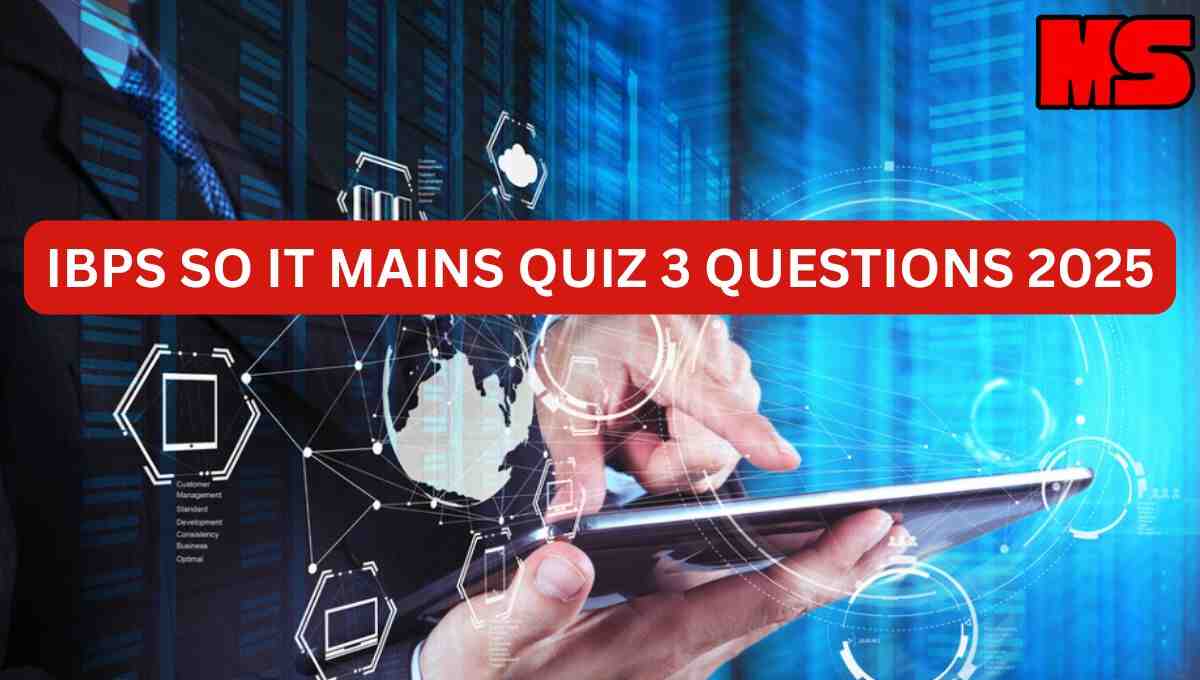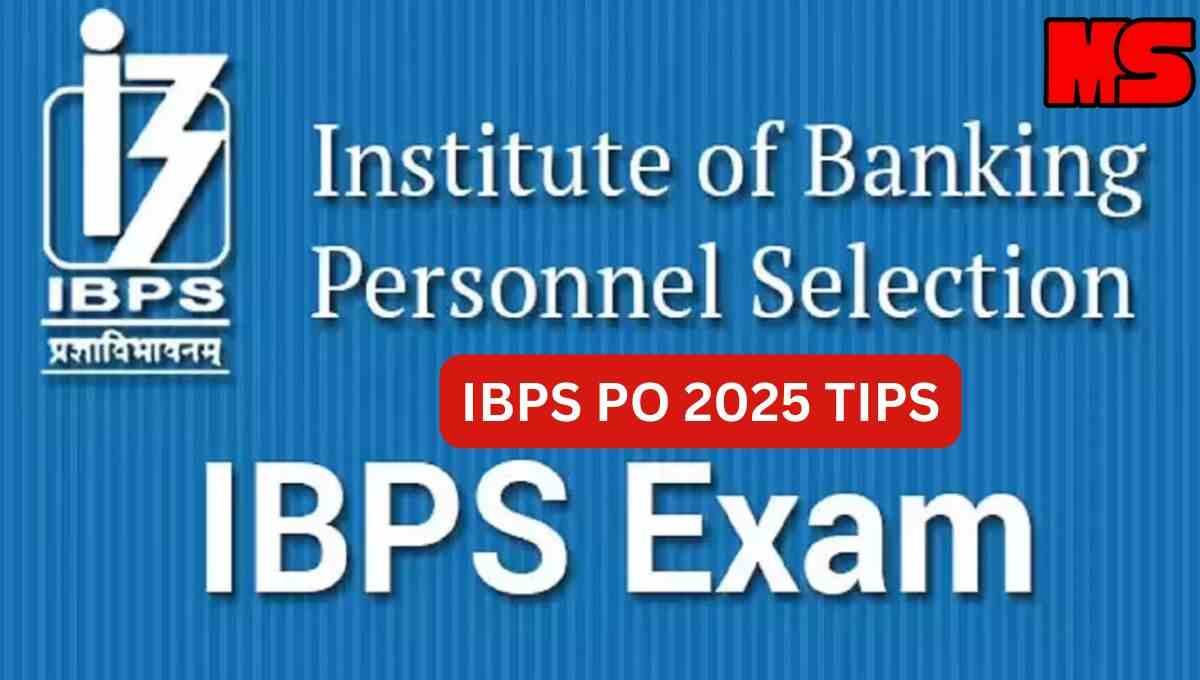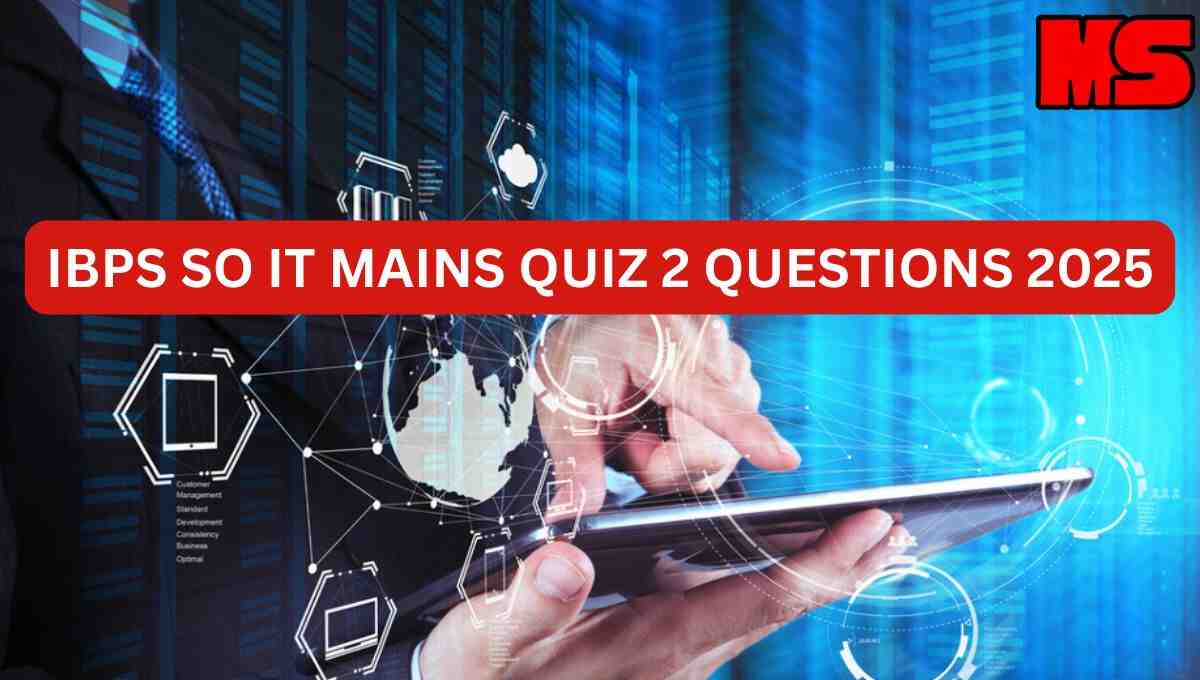IBPS SO IT MAINS QUIZ 2 QUESTIONS 2025 consists of the following pattern of questions. Go for it, and read them for your knowledge. So that you can score at least a certain number in the exam. Along with it, detailed PDFs are available, you can read them.
IBPS SO IT MAINS QUIZ 2 QUESTIONS 2025

IBPS SO IT MAINS QUIZ 2 QUESTIONS 2025 will guide you with some basic concepts. You can move and read that!
1. If a datagram router goes down –
- (A) all packets will suffer
- (B) only those packets which are queued in the router at that time will suffer
- (C) only those packets which are not queued in the router at that time will suffer
- (D) no packets will suffer
Solution: (B) only those packets which are queued in the router at that time will suffer
Congestion is more efficiently handled in datagram approach than in virtual circuit because each packet is transferred through a free available path. If a router crashes in virtual circuit, all the packets passing through it have to be avoided. In contrast, if a datagram router goes down, only those users whose packets were queued in the router at the time will suffer, and maybe not even all those, depending upon whether they have already been acknowledged.
2. The PSTN is an example of a which network?
- (A) packet switched
- (B) circuit switched
- (C) message switched
- (D) None of these
Solution: (B) circuit switched
In IBPS SO IT MAINS QUIZ 2 QUESTIONS 2025, The public switched telephone network (PSTN) is the aggregate of the world’s circuit-switched telephone networks that are operated by national, regional, or local telephony operators, providing infrastructure and services for public telecommunication.
3. For a connection-oriented service, we need a –
- (A) virtual circuit subnet
- (B) short circuit subnet
- (C) datagram subnet
- (D) wireless subnet
Solution: (C) datagram subnet
In datagram subnets, even though, routing is done separately for every packet, the service remains connection oriented and not connectionless
4. Delimiting and synchronization of data exchange is provided by
- (a) Application layer
- (b) Session layer
- (c) Transport layer
- (d) Link layer
Solution: (b) Session layer
The session layer’s main purpose is to control the dialogue and interactions between applications in end systems. It provides services which are classified into two categories: the first is binding/unbinding of two presentation entities, and the second is the control of data exchange, including synchronization and delimiting.
5. In datagram subnet new route is chosen for –
- (A) for every packet sent
- (B) for all the packet sent
- (C) only for the first packet
- (D) for the packet which is not transmitted
Solution: (A) for every packet sent
In datagram subnets, no routes are worked out for packets being sent from the sender to the recipient, instead for every packet a new route is worked out every time before sending. In this way every packet is, independently routed irrespective of the route followed by its predecessor.
6. In which category, each packet of a message follows the same path from sender to receiver?
- (A) circuit switching
- (B) message switching
- (C) virtual approach to packet switching
- (D) datagram approach to packet switching
Solution: (A) circuit switching
In circuit-switched networks, network resources are static, set in “copper” if you will, from the sender to receiver before the start of the transfer, thus creating a “circuit”. The resources remain dedicated to the circuit during the entire transfer and the entire message follows the same path.
7. Which type of switching uses the entire capacity of a dedicated link?
- (A) circuit switching
- (B) datagram packet switching
- (C) virtual circuit packet switching
- (D) message switching
Solution: (D) message switching
Message switching is a network switching technique in which data is routed in its entirety from the source node to the destination node, one hope at a time. During message routing, every intermediate switch in the network stores the whole message. IBPS SO IT MAINS QUIZ 2 QUESTIONS 2025 says that if the entire network’s resources are engaged or the network becomes blocked, the message-switched network stores and delays the message until ample resources become available for effective transmission of the message
8. In what, each packet of a message need not follow the same path from sender to receiver?
- (A) circuit switching
- (B) message switching
- (C) virtual approach to packet switching
- (D) datagram approach to packet switching
Solution: (D) datagram approach to packet switching
Datagram packet-switching is a packet switching technology by which each packet, now called a datagram, is treated as a separate entity. Each packet is routed independently through the network. Therefore packets contain a header with the full information about the destination.
9. In which circuit switching, delivery of data is delayed because data must be stored and retrieved from RAM?
- (A) space division
- (B) time division
- (C) virtual
- (D) None of these
Solution: (B) time division
Time division multiplexing (TDM) is a communications process that transmits two or more streaming digital signals over a common channel. In TDM, incoming signals are divided into equal fixed-length time slots. After multiplexing, these signals are transmitted over a shared medium and reassembled into their original format after de-multiplexing. Time slot selection is directly proportional to overall system efficiency.
10. If the route from I to J is computed in advance, off line, and downloaded to the routers when the network is booted is called as –
- (A) Dynamic routing
- (B) Session routing
- (C) Temporary routing
- (D) Static routing
Solution: (D) Static routing
Static routing is a type of network routing technique. Static routing is not a routing protocol; instead, it is the manual configuration and selection of a network route, usually managed by the network administrator. It is employed in scenarios where the network parameters and environment are expected to remain constant.
Related:
- IBPS SO IT MAINS QUIZ QUESTIONS 2025 – Detailed Solutions
- IBPS SO IT OFFICER MAINS 2025- Detailed Syllabus with PDFs Links
- IBPS SO MARKETING QUIZ QUESTIONS 2025- Solutions!
Ananya Shree is a versatile content writer who loves making complex topics easy to understand. She writes about trending keywords for the audience. Ananya’s goal is to help people interestingly learn about each topic. Moreover, in her free time, she enjoys exploring trending topics.










